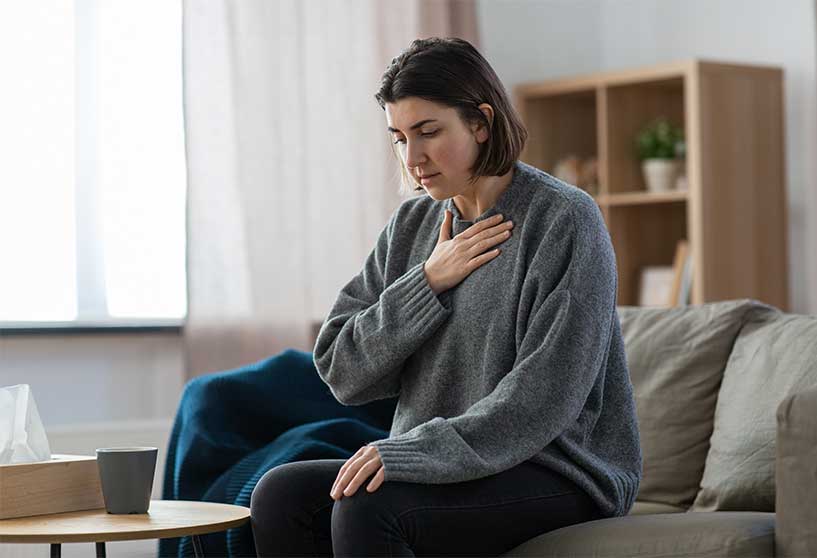Can You Overdose On Vicodin?

Medically Reviewed By: Manish Mishra, MBBS
Taking high doses of the prescription drug Vicodin (acetaminophen and hydrocodone), or mixing it with other drugs or alcohol, increases the risk of overdose.

Vicodin abuse can lead to substance use disorder and an increased risk of Vicodin overdose, and an opioid overdose can be fatal if left untreated.
Vicodin is the brand name for the combination of hydrocodone and acetaminophen and is typically used to treat severe pain. Acetaminophen (Tylenol) is used to relieve pain and reduce fevers and hydrocodone is an opioid analgesic that’s used for pain relief.
The painkiller can also be found under the brand name Lortab.
Vicodin Overdose Dosage
There is an FDA boxed warning on the pain reliever that states the dosage should not exceed 325 mg of acetaminophen because it increases the risk of liver damage, liver failure, overdose, and death.
Acetaminophen can be especially lethal if it is taken in doses up to 1000 mg or more, which can be as few as three or four Vicodin tablets.
As for hydrocodone, the Centers for Disease Control and Prevention (CDC) states that doses as low as 20 mg can lead to a drug overdose. Any dosage that includes higher than 50 mg of hydrocodone doubles the risk of overdose, which can be as few as five Vicodin tablets.
Vicodin comes in concentrations of 2.5, 5, 7.5, or 10 mg of hydrocodone for every 300-325 mg of acetaminophen. One or two tablets every 4-6 hours is recommended and you should not take more than 12 pills per day.
Signs & Symptoms Of Vicodin Overdose
If you expect someone you love is experiencing a Vicodin overdose, there are signs and symptoms of both hydrocodone overdose and acetaminophen overdose you can look out for.
Vicodin overdose symptoms may include:
- bluish-colored fingernails and lips
- shallow breathing
- cold, clammy skin
- coma
- confusion
- dizziness
- fatigue
- lightheadedness
- yellow skin and eyes (jaundice)
- loss of consciousness
- low blood pressure
- muscle twitches
- nausea and vomiting
- pinpoint pupils
- seizures
- spasms of the stomach
- bloody or cloudy urine
- chest pain or discomfort
- extreme drowsiness
- increased sweating
- irregular heart rate
Vicodin Overdose Risk Factors
There are several risk factors that can make someone more at risk for a Vicodin overdose than others:
- taking illegal opioids
- taking higher doses of Vicodin than prescribed
- taking Vicodin over a long period of time
- taking the drug not as directed (snorting, plugging, smoking, etc.)
- combining Vicodin with other drugs and/or alcohol including benzodiazepines, sedatives, muscle relaxants, or antipsychotics
- taking extended-release or long-acting formulations of Vicodin
- having certain conditions like sleep apnea, asthma, or liver damage
- personal or family history of alcohol or substance abuse
- history of mental health disorders like depression, anxiety, or PTSD
Prescription Opioid Overdose Deaths In Ohio
Ohio is one of the states that has severely struggled through the opioid epidemic. Some data regarding prescription opioids in this state include:
- Opioids were responsible for 86% of the overall unintentional overdose deaths in 2020 in Ohio.
- The total unintentional opioid overdose deaths from 2019-2020 went from 3,372 to 4,308. That’s an increase of 936.
- In 2020, natural and semi-synthetic opioids like Vicodin were responsible for 415 deaths due to unintentional overdose. That is 44 more deaths than 2019.
Vicodin Overdose Treatment
If you or a loved one show signs of a Vicodin overdose, you need to call 911 immediately and administer naloxone (Narcan) if you know how. Naloxone helps reverse the effects of opioid overdose.
Once emergency medical help arrives, they will likely take you to the hospital. If naloxone has not already been administered, they will likely give you that.
Healthcare providers will also run a variety of tests that may include:
- blood and urine tests
- CT scan of the head
- chest x-ray
- ECG (electrocardiogram)
Besides naloxone and the tests, treatment may also include:
- activated charcoal
- breathing support like an oxygen tube or a ventilator
- IV fluids
- stomach pumping or gastric lavage to remove any leftover Vicodin in your system
After you’re stable, detox and addiction treatment are likely next steps.
Opioid Addiction Treatment
During a detox program, you fully come off the drug and receive treatment for any withdrawal symptoms that may occur.
After detox, you can attend an inpatient or outpatient treatment center where you’ll attend therapy and support groups, participate in recreational activities and learn more about your Vicodin addiction.
You may also start medication-assisted treatment where you receive medication like methadone to help with cravings and physical dependence.
If you or a loved one are struggling with opiate/opioid drug abuse, please contact Ohio Recovery Center for information on our inpatient treatment options.
- Ohio Department of Health — 2020 Ohio Drug Overdose Data: General Findings https://odh.ohio.gov/wps/wcm/connect/gov/6a94aabe-ea77-4c01-8fd8-2abdd83b4ff8/2020%2BUnintentional%2BDrug%2BOverdose%2BAnnual%2BReport.pdf?MOD=AJPERES&CONVERT_TO=url&CACHEID=ROOTWORKSPACE.Z18_K9I401S01H7F40QBNJU3SO1F56-6a94aabe-ea77-4c01-8fd8-2abdd83b4ff8-o2GcAjB
- National Library of Medicine: MedlinePlus — Hydrocodone and acetaminophen overdose https://medlineplus.gov/ency/article/002670.htm
- National Library of Medicine: MedlinePlus — Opioid Overdose https://medlineplus.gov/opioidoverdose.html
- U.S. Department of Labor — Risk Factors for Opioid Misuse, Addiction, and Overdose https://www.dol.gov/agencies/owcp/opioids/riskfactors

